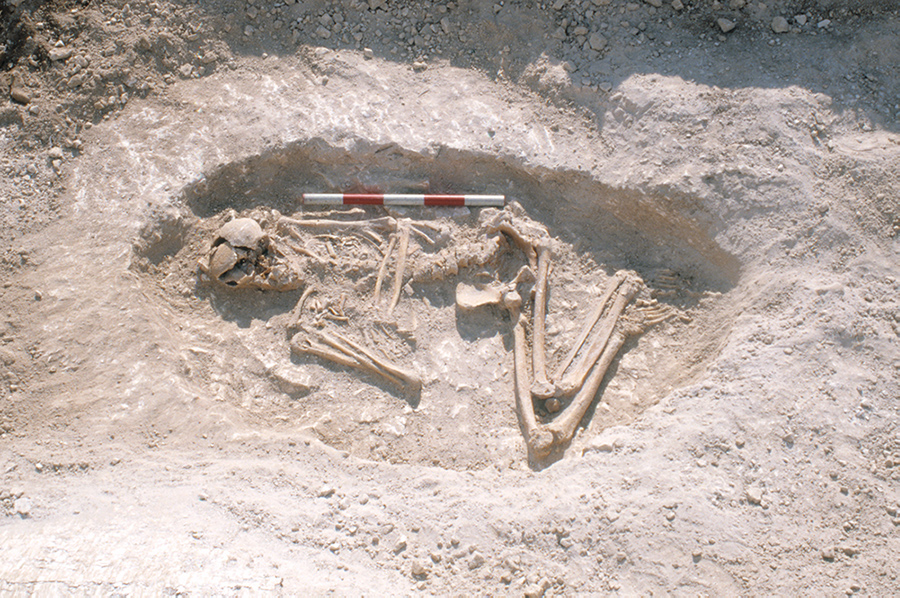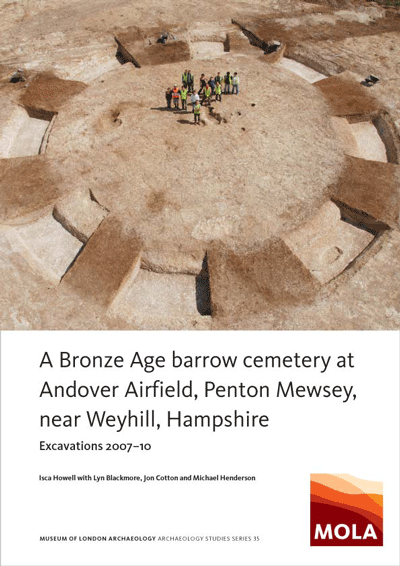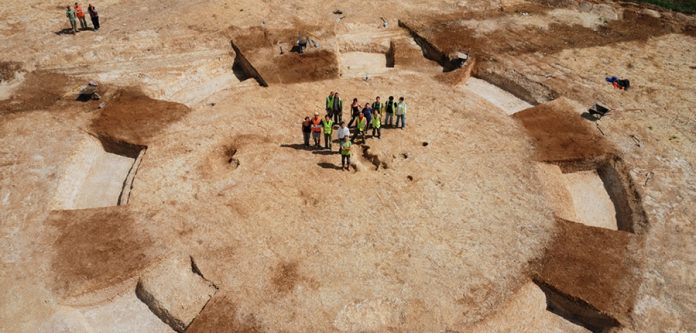MOLA have published a new book revealing how local populations may have used burial monuments to stake their claim on the Hampshire landscape during the Bronze Age. “A Bronze Age barrow cemetery at Andover Airfield, Penton Mewsey, near Weyhill, Hampshire” presents the results of excavations carried out on the site of the former RAF Andover between 2007 and 2010.
The dig uncovered seven prehistoric ring ditches measuring between ten and thirty five metres in internal diameter, five of which were found to be clustered in a ‘barrow cemetery’. It is likely that the ditches once surrounded barrow mounds (round piles of earth) covering high-status burials. Though the mounds have since been levelled and ploughed, eight inhumations and the cremation burials of at least thirty-five individuals were found still intact. Radiocarbon dating of ten of these showed those tested to date to between 1220 and 1690 cal BC, suggesting that the burial landscape was developed over several hundred years.
Display of territorialism
The ‘barrow cemetery’ cluster appears to have been intentionally placed in a prominent location at the eastern extent of Wessex, in a display of wealth and territorialism in the Early Bronze Age. It is on the brow of a hill, maximising its visibility to people travelling through combe from the valley of the Pilhill Brook below to the high chalk of the nearby Harroway; an ancient thoroughfare which once stretched from Seaton in Devon, to Dover in Kent. By contrast, later cremations in the Middle–Late Bronze Age cremation cemetery are far more discreet, which may indicate a move towards more insular and localised lifestyles.

No sign of settlement
Excavation results suggest that the burial landscape was respected and left unaltered for many centuries, with no evidence uncovered for settlement in the immediate area. Excavations uncovered very few finds, with the exception of several cremation urns. Only an isolated beaker burial, a cremation pit with a barbed and tanged arrowhead, a well containing large quantities of animal bone, several possible Roman field ditches and numerous gullies of probable post-medieval date were uncovered.
The largest of the five clustered barrows appears to have survived as an earthwork long enough to require levelling during the extension of Andover Airfield in 1917. Known as the ‘Mark Lane’ tumulus, it is probably the ‘Hlew’ or tumulus mentioned in a charter dating to AD 901. Clearly, the mark left on the landscape by Andover’s Bronze Age elites was an enduring one.
The new publication, ‘A Bronze Age barrow cemetery at Andover Airfield, Penton Mewsey, near Weyhill, Hampshire: excavations 2007–10’ is available on the MOLA website for £15.

From MOLA News

